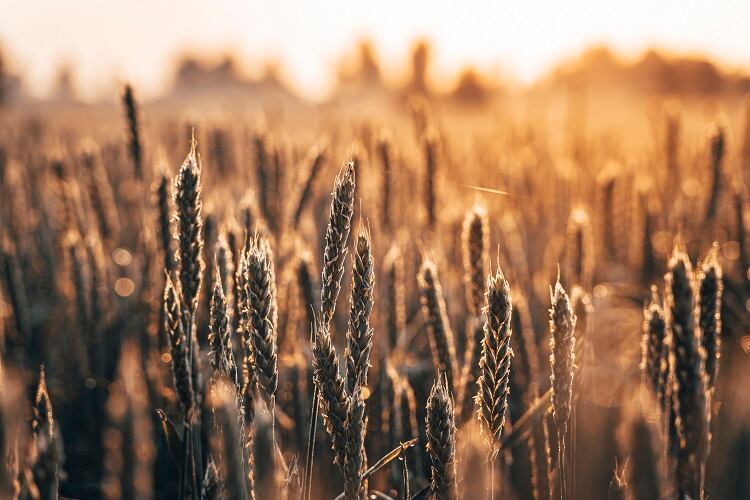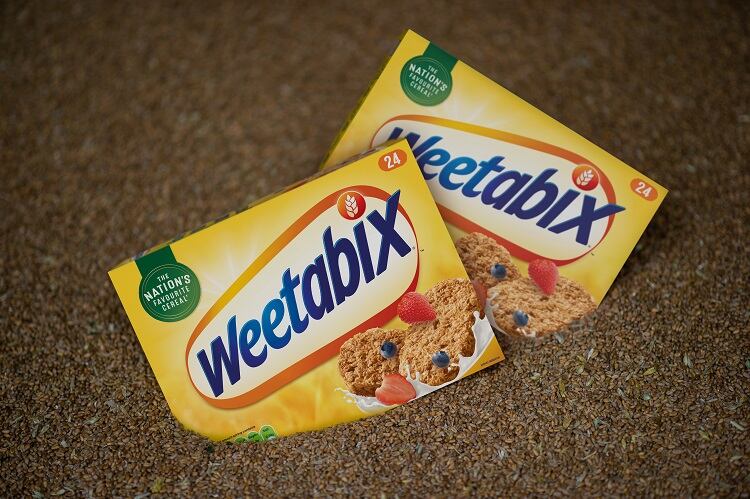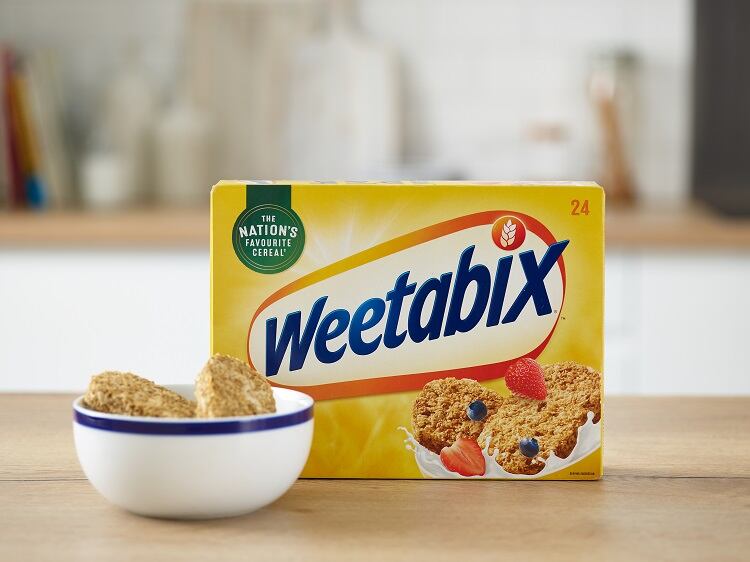Weetabix Food Company, owned by CPG holding company Post Holdings, specialises in breakfast cereals. The company boasts Alpen, Ready Brek, Weetos, and the Weetabix brand in its portfolio, including the UK’s number one selling cereal: Weetabix Original.
In line with the UK Government’s ambition of reaching Net-Zero greenhouse gas (GHG) emissions by 2050, Weetabix Food Company has set out a roadmap for producing a Net-Zero box of Weetabix Original.
The company has just under 30 years to achieve its goal. “We don’t see it as a quick and easy thing to do,” the company’s supply chain, procurement and technical director, John Petre, told FoodNavigator. To reach its objective, the company has identified ‘building blocks’ that will help it get there, ranging from operational efficiencies to green energy and regenerative agricultural practices.
Why Net-Zero, rather than Carbon Neutral?
With the agri-food industry responsible for around a quarter of global greenhouse gas (GHG) emissions, the pressure is on for food makers to improve their sustainability credentials. Much of this is coming from governments, investors, and consumers.
In response, a growing number food and beverage players are committed to achieving Net-Zero or Carbon Neutral claims. For a business to be considered Net-Zero, it must remove as many GHGs from the atmosphere than it produces, within its supply chain. Carbon neutrality, on the other hand, can be achieved when all emissions that cannot be decarbonised are neutralised through the support of environmental projects.
Weetabix Food Company is going down the Net-Zero route for its Weetabix Original breakfast cereal. The decision came from having an ‘end destination in mind’, explained Petre. “We didn’t want to get drawn along the way into things [such as questionable carbon credit schemes] that made us feel better, but weren’t going to be reducing our own impact.”
Indeed, some carbon offset schemes have been criticised for failing to reduce climate emissions and in so doing, contributing to greenwashing.
“If there are credible carbon neutral schemes, we’d be really happy to support and participate in those, but it feels like if don’t take really remove the carbon we’re producing, we’re not going to solve the problem.”

So if Weetabix is not turning to carbon credits, at least for the time being, how does it plan to reduce carbon emissions associated with production of its Weetabix Original product between now and 2050?
Continual improvements of operational efficiencies
One of the main ways Weetabix is, and will continue to, reduce carbon emissions is by improving operational efficiencies. This mean that every time Weetabix needs to replace a piece of equipment, it does so with sustainability in mind.
When Weetabix needed to replace its transformers (which distribute electricity around the site), for example, it selected energy efficient replacements which limited the amount of electricity lost throughout the distribution process. “It’s one big capital investment, but as we do rolling replacements to keep our manufacturing plants up to date, it’s a great way of reducing energy and making ourselves more efficient.”
This is not unique to Weetabix, suggested Petre. “Any big manufacturer would be doing this. We’re always looking at how we can do things better, produce less waste and use less energy. It’s in our DNA as a manufacturer; the carbon footprint just gives another reason for that to be an important activity.”
100% recyclable packaging
Another pillar within Weetabix’s sustainability programme is packaging. This year, the company swapped out its Weetabix Original biscuits’ packaging for a recyclable paper wrap. Its goal is to have 100% recyclable packaging in the UK, which if it hasn’t achieved already, is ‘extremely close’.
Five years ago, around 90% of the Weetabix Original packaging was recyclable, and now, once rollout is completed, it will attain 100%.
The new packaging was developed in conjunction with its suppliers, explained Petre. “It’s up to us to make the right choices, to ask what the sustainable options are, and make sure we test and trial them with our products. Packaging plays a lot of roles: it protects the product, extends shelf-life, and makes sure the product has a great taste when it arrives.
“We want to make sure that none of those things are compromised, while at the same time making packaging sustainable.”
As a result of packaging changes, Weetabix has managed to reduce its carbon footprint by 648.4 tonnes per year.
Reducing emissions of wheat
To produce the zero-carbon Weetabix Original, the raw material – wheat – needs to be at least carbon neutral, if not carbon negative.
To assess the current carbon footprint for Weetabix Original, the company undertook studies with its farmers to explore the different factors contributing to carbon emissions associated with producing their wheat.
The first study, which the company completed this year with 17 of its farmers responsible for producing a third of the wheat supplied to make Weetabix biscuits, revealed that their GHG emissions for the 2021 harvest were likely to have been between 40-50% lower than the standard emission factors for UK wheat production used in previous calculations.
The success in benchmarking can be attributed to Weetabix having formed a collective of British farmers back in 2010. The Growers’ Group is made up of 350 farmers all located within 50 miles of the company’s Northamptonshire factory. They grow approximately 75,000 metric tonnes of wheat each year across more than 4m acres.
Working with global data platform Map of Ag, which provides insights to the agricultural industry, Weetabix was able to help some of the farmers within its Growers’ Group to collect carbon footprint data more easily and provide information that enabled them to look carefully at their processes.
Further, the farmers demonstrated high nitrogen use efficiency, resulting in lower impacts on air and water quality.
“We expected our farmers’ performance to be pretty good. But what it showed was that their carbon footprint for the wheat they produced for us was 40-50% lower [than the standard],” explained Petre.
Following the success of the first carbon footprint study, Weetabix plans to repeat the assessment with more farmers over the next several years with the gaol of sourcing carbon neutral wheat. In the long-term, it is ‘absolutely’ Weetabix’s ambition to make its wheat production carbon negative, the sustainability chief told this publication.
The company also plans to work with smaller groups of growers to evaluate new technologies, such as precision nitrogen applications and soil assessments, to accelerate its carbon reduction strategy.
Green energy and water saving initiatives
One of the quick wins instigated by Weetabix was in switching out fossil-based electricity for green alternatives. This was ‘pretty straightforward’, recalled Petre. “We just had to make sure that all the electricity we were using was zero carbon.”
This has now been achieved: the company has secured a new contract that will supply its site with 100% renewable electricity until 2025.
Weetabix also looked into ways it could produce renewable electricity itself, by for example, installing solar panels on its facility’s roof. But the economics didn’t make sense, suggested Petre. “Our business is making breakfast cereal, we do that really well. We looked at putting solar panels on our roof, but [considering] the economics of that, it was better for us to buy the electricity and let other people invest in the solar panels rather than do it ourselves.”

In addition, the Weetabix Food Company has instigated a water saving initiative. To date, the company has saved more than five million litres, via a programme that captures and reuses condensate in the manufacturing process.
“When we cook the wheat, we use steam,” explained Petre, likening the technology to a ‘big pressure cooker’. Any steam that escapes is effectively wasted energy, and so the company invested in condensate traps. “The result is less steam lost and wasted…”
New technologies required
Despite significant progress having already been made, achieving Net-Zero is no easy task. The company has many years to get there, just over 27 to be precise, which will be much needed, Petre explained. “The reason the time scale for the carbon reduction is so long, is that there are some elements that are going to need technology changes.”
For example, in the Weetabix manufacturing process, the company bakes the wheat biscuits in an oven, which is an energy-intensive process. “At the moment, there isn’t a technological way of baking without using some sort of carbon. So I think some of the elements of getting to zero will require technology changes.”
Weetabix remains on the lookout for such technologies, as does its suppliers.
Other challenges will hopefully be solved by an industry-wide movement towards carbon neutral inputs, suggested Petre. “We don’t think for one moment that our suppliers are going to make things carbon-zero for us but not for others.”
Ultimately, the company is aware that the challenge will get greater the closer to gets to Net-Zero. “We need to stay on it [right to the end], and make sure we learn from the good things we’ve done and work out what we need to do next.”


